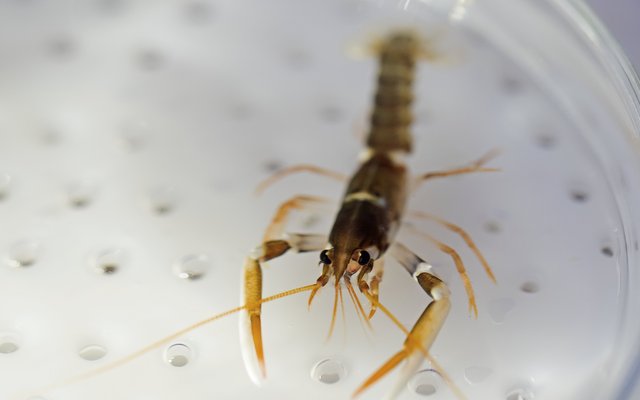Ocean On Land Technology® reported an increase in the survival rate of European clawed lobsters, during experiments focused on hatchery culture. Created in partnership with Orkney Shellfish Hatchery, the experiments, which began in October of last year at the hatchery’s Orkney facility, have reported continued uptrends in larval survival rates, which now consistently stand at upwards of 30%, a number significantly higher than the estimated 0.005% survival rate of European clawed lobster in the wild.
Focused on growing clawed lobsters on land from broodstock to postlarvae, the series of experiments utilized Ocean On Land Technology’s state-of-the-art Hatchery-in-a-Box system, a product which comprises a fully transportable, complete hatchery solution inside a specially-modified shipping container.
Rigorous scientific studies on husbandry, system design and nutrition completed by the team have aided the survival rate improvement, something that continues to drive efficiency into the hatchery process by allowing operators to consistently produce more larvae from smaller facilities. In addition, the subsequent use of Ocean On Land Technology’s patented Aquahive® system within the experiments has resulted in 90% survival from postlarvae (stage IV-VI) to a robust juvenile size.
“Our teams continue to push the boundaries in both science and technology resulting in regular ongoing increases in larval survivorship and operational efficiency. We are proud of the work that our teams are doing, and of their ongoing success, and are excited about the future results of this multi-pronged approach to the issues surrounding lobster larval rearing,” said Nik Sachlikidis, managing director of the Cadman Capital Group’s Aquaculture Portfolio.
Matthew Johnson, Aquaculture Research and Development Director at the Cadman Capital Group added that “taking a species that has such high larval mortality in the wild and providing it with the right conditions to flourish provides a good springboard for restocking programs, which are now able to re-stock larger and more robust lobsters, which is likely to further improve survivorship once released. It also provides good survival through the high cannibalism post-larval phases, creating the opportunity to further work on the grow-out of this species.”













